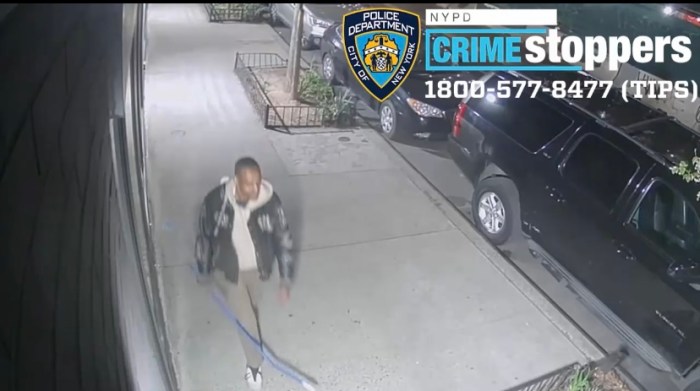By Alexander Dworkowitz
The grand jury that indicted John Taylor on charges of massacring five people at a Wendy’s restaurant came from a pool of jurors that systematically excluded Hispanics, a Queens College professor testified at a hearing last Thursday.
In front of State Supreme Court Judge Steven Fisher in Kew Gardens, sociology professor Andrew Beveridge said the process of selecting grand jurors in Queens is fundamentally skewed against certain populations of the borough.
“The conclusion really is, almost to a degree of certainty, that it excludes the Hispanic population, poor people, and younger people,” said Beveridge, describing the Queens jury pool.
Beveridge’s testimony comes as part of the defense’s attempts to throw out both the original and supplemental indictment of Taylor, who faces the death penalty for allegedly murdering five employees of a Wendy’s restaurant on Flushing’s Main Street on May 24, 2000.
Craig Godineaux, 31, pleaded guilty to the murders in January and was sentenced to life in prison.
Beveridge testified after a conviction was thrown out in another high-profile murder case based on the selection of the jury. Last week a federal appeals judge overturned the conviction of two Brooklyn men on charges of civil rights violations in connection with the murder of Yankel Rosenbaum in the Crown Heights riots of 1991. The appeals judge ruled that the trial judge erred in using race as a factor in selecting a replacement juror and thereby ended up with a biased juror.
But unlike the Crown Heights case, Taylor’s challenge of the indictment is not limited to the Wendy’s case. Beveridge’s testimony did not specifically refer to the Wendy’s grand juries. In fact, he admitted he had no idea what the composition of those juries was. Instead, his testimony applied to every conviction made during the spring of 2000.
After his testimony, one of Taylor’s lawyers said his legal team decided to bring the issue to the forefront because of the magnitude of the case.
“Most lawyers don’t have the time to pursue this,” said Elizabeth Wilson, a lawyer for the defense.
Beginning Thursday, Fisher plans to hear more testimony on the matter before making a ruling.
Beveridge, who specializes in statistical analysis, has testified on problems with the jury selection process more than a dozen times, always as part of a defense effort. In every single case, the judge ruled against the defense’s motion, said Beveridge.
According to Beveridge, four of the five source lists used by Queens County to select jurors severely underrepresent the Hispanic population of Queens. Those four lists are: the tax roll, the Department of Motor Vehicle list, the voting list, and the list of unemployed. Only the fifth and smallest of the lists, the welfare rolls, may not underrepresent Queens Hispanics, he said.
One problems with the lists is they account for higher-income people in greater numbers than those with lower incomes, and since Hispanics tend to have less income than the average Queens resident, this results in a “systematic exclusion,” Beveridge testified.
Moreover, according to Beveridge, the source lists tend to be several years old. Since the size of the Queens Hispanic population has grown rapidly over the last few years, the jury pool does not reflect this growth, said Beveridge.
“The older the list is, the less reflective it is of the Hispanic population,” he said.
Beveridge said the problems of these lists is compounded by the fact that there are countless overlaps in the lists, increasing any discrepancies.
Beveridge said the overlaps were so large that as late as 1999 the jury pool list had more than 2.1 million names on it, when the over- 18 Queens population was only 1.7 million. Recent efforts by the borough to eliminate duplicates led to a dramatic drop in the jury pool list to about 639,000.
During cross-examination, Assistant District Attorney Daniel Saunders challenged Beveridge’s testimony.
“What if a lower proportion of Hispanic people choose not to send the questionnaire back?” asked Saunders, referring to the jury summons. “That’s not a systematic exclusion.”
Beveridge said he agreed that such a response was possible.
Saunders and the judge also questioned the citizenship status of many Hispanics.
When asked by Saunders if there was a source list that fairly represented the Hispanic population, Beveridge admitted that there was no such list.
Reach reporter Alexander Dworkowitz by e-mail at Timesledger@aol.com or call 229-0300, Ext. 141.





























